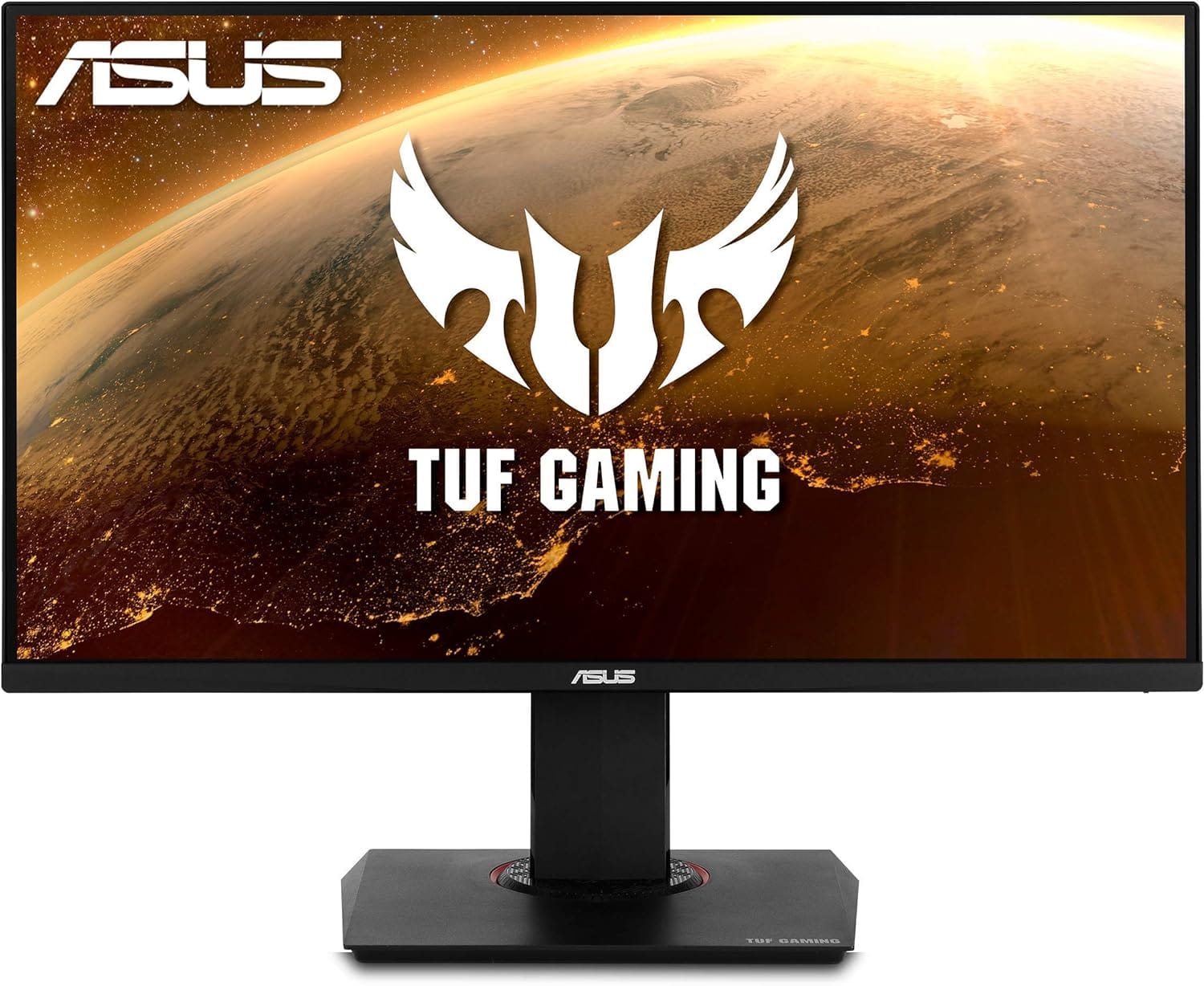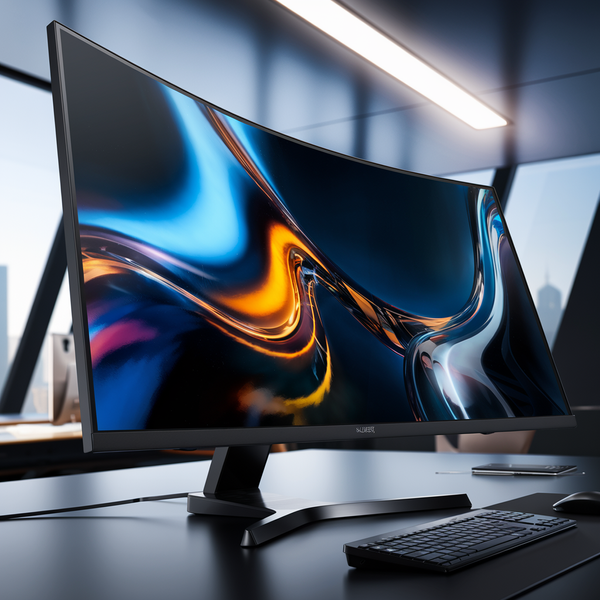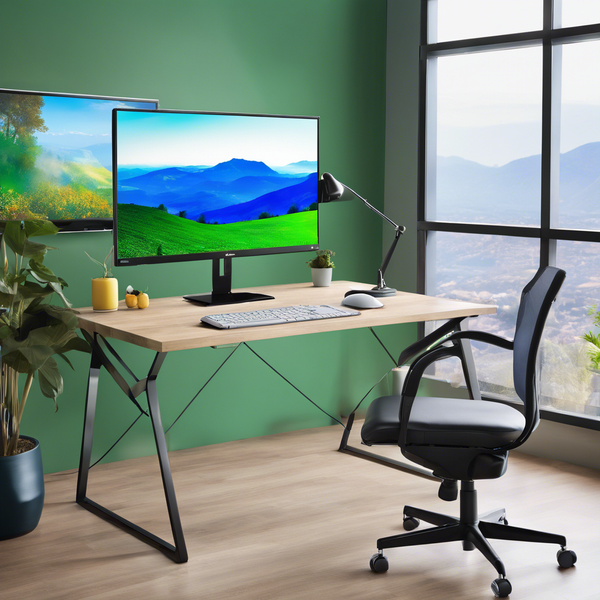Introduction: Why You Need A 4K Monitor
In today's tech-savvy world, having a 4K monitor is a game-changer. The high resolution and better picture quality make everything from gaming to content creation a visual delight.
Understanding Pixel Density: Why It Matters
Pixel density plays a crucial role in determining the image quality of a monitor. Higher pixel density means more pixels per inch, resulting in better picture quality and sharper images.
This is especially important for tasks like photo editing and content creation, where every detail matters.
Monitors with higher pixel density provide a significant difference in image clarity and detail.
Whether you're watching movies, playing games, or working on creative projects, a higher pixel density ensures that you get the best viewing experience possible.
The Importance of Refresh Rate in 4K Monitors
A high refresh rate is crucial for a seamless gaming experience. For gaming monitors, a refresh rate of 60Hz is the minimum, but 120Hz or higher is ideal for smooth visuals.
This ensures that fast-moving scenes in games are displayed without any lag or tearing, enhancing your overall gaming experience.
For everyday use, a refresh rate of 60Hz is generally sufficient. However, if you frequently watch high-resolution videos or engage in content creation, a higher refresh rate can make a significant difference.
It provides smoother transitions and reduces eye strain, making your computer monitor more comfortable to use for extended periods.
Choosing the Right Monitor for Photo Editing
When it comes to photo editing, color accuracy and high resolution are paramount. A 4K monitor with a wide color gamut and HDR support can make a world of difference in your editing workflow.
These features ensure that your images are displayed with the utmost precision, allowing you to make accurate adjustments.
For photographers and graphic designers, a monitor with high pixel density and color accuracy is essential.
Look for monitors that offer features like 99% sRGB coverage and HDR support to ensure that your work is displayed in the best possible light.
USB-C Ports: The Future of Connectivity
USB-C ports are revolutionizing how we connect our devices. These ports offer power delivery and data transfer capabilities, making them ideal for a compatible laptop.
The USB-C port not only charges laptops but also enables display connections, with different wattage capabilities affecting compatibility with power-hungry devices.
Utilizing just one USB-C cable, you can effortlessly charge your laptop, transfer data, and connect to a monitor, streamlining your workspace.
The versatility of USB-C ports cannot be overstated. They are becoming the standard for modern devices, offering better picture quality and faster data transfer rates.
This makes them indispensable for anyone looking to streamline their connectivity options and reduce clutter on their desk.
IPS Panels vs. OLED Displays: Which is Better?
When it comes to color accuracy, IPS panels are hard to beat. They offer consistent and accurate colors, making them ideal for photo editing and content creation.
IPS panels also provide better viewing angles, ensuring that the image quality remains consistent from different perspectives.
On the other hand, OLED displays excel in delivering deep blacks and vibrant colors. They offer better contrast and are perfect for watching movies or playing games.
However, OLED technology comes with the risk of burn-in, which can be a concern for static images displayed for long periods.
Tips for Choosing the Best 4K Monitor for Your Needs
When selecting the best 4K monitor, consider the screen size and intended use. A larger screen is ideal for gaming and content creation, while a smaller one may suffice for office work.
Look for key features like high resolution, color accuracy, and a good refresh rate to ensure you get the best value.
Connectivity options are also crucial. Ensure the monitor has multiple USB ports, including USB-A ports, for versatile peripheral connections. Having a USB hub in the monitor can further enhance productivity by allowing you to connect multiple peripherals seamlessly.
If you plan to use the monitor for gaming, features like AMD FreeSync and a high refresh rate can significantly enhance your gaming experience. A KVM switch can be beneficial for users who need to switch between multiple devices using the same keyboard and mouse, enhancing productivity.
This guide will walk you through the top 4k monitors on Amazon that we have picked. These monitors are in the 27-32 inch range where criteria for selection were based upon reviews, ratings, pricing, and refresh rate.
1. LG UltraFine UHD 27-Inch 4K Monitor
The LG UltraFine UHD 27-inch 4K Monitor is a dream come true for content creators.
With its ultra HD resolution and color accuracy, this monitor is perfect for photo editing and content creation.
Exclusive Insights
This monitor boasts VESA DisplayHDR 400, providing a high dynamic range that enhances image quality.
The AMD FreeSync technology ensures smooth gaming features, reducing screen tearing and flicker.
With USB-C ports, this monitor offers versatile connectivity, making it compatible with various laptops.
The 99% sRGB coverage ensures vibrant, vivid colors, making it ideal for graphic designers and photographers.
Customer Review
"I've been using the LG UltraFine UHD 27-inch 4K Monitor for my photo editing, and the color accuracy is phenomenal. The USB-C ports make it easy to connect my laptop, and the HDR quality is top-notch. Highly recommend for content creators!" - Sarah
2. Sceptre 4K IPS 27" Monitor
The Sceptre 4K IPS 27" Monitor offers good value without compromising on essential features. It's perfect for everyday use and light gaming.
Exclusive Insights
This monitor delivers 4K resolution with 99% sRGB, ensuring vibrant colors and better contrast.
The built-in speakers and multiple USB ports make it a versatile choice for both work and entertainment.
With a refresh rate of up to 70Hz, this monitor provides smooth visuals, reducing screen tearing.
The anti-flicker technology and blue light shift application protect your eyes during long hours of use.
Customer Review
"As a student on a budget, the Sceptre 4K IPS 27" Monitor has been a lifesaver. The image quality is excellent, and the built-in speakers are a nice touch. It's a great budget option for anyone looking for a reliable 4K monitor." - Alex
3. ASUS TUF Gaming VG289Q
For gamers seeking the ultimate experience, the ASUS TUF Gaming VG289Q is a top contender. This gaming monitor offers stunning visuals and features designed to enhance your gaming experience.
Exclusive Insights
The 28-inch 4K IPS display provides crisp and detailed visuals, perfect for gaming.
The FreeSync technology eliminates screen tearing, ensuring smooth gameplay.
The HDR 10 compatibility enhances color and maximum brightness levels, making every game more immersive.
With Shadow Boost technology, this monitor brightens dark areas without over-exposing bright scenes.
The ergonomic design allows for swivel, tilt, pivot, and height adjustments, ensuring comfort during long gaming sessions.
Customer Review
"The ASUS TUF Gaming VG289Q has transformed my gaming experience. The visuals are stunning, and the FreeSync technology makes a huge difference. The adjustable stand is a great feature for long gaming sessions. Worth every penny!" - Mike
4. SAMSUNG 32" UJ59 Series
The SAMSUNG 32" UJ59 Series is perfect for office work and everyday use.
With its high resolution and eye-saving features, this monitor is ideal for long hours of productivity.

Best for Office Work and Everyday Use
SAMSUNG 32 inch UJ59 Series 4K UHD
Exclusive Insights
This monitor offers UHD resolution with over 8 million pixels, providing better picture quality. The Eye Saver Mode and Flicker-Free technology reduce eye strain, making it perfect for office work. The SAMSUNG 32" UJ59 Series also includes smart TV features such as built-in apps and remote controls, offering functionalities typically associated with smart TVs.
With FreeSync technology, this monitor ensures smooth visuals, whether you’re working or gaming.
The Picture-by-Picture feature allows you to connect two devices simultaneously, enhancing multitasking capabilities.
Customer Review
"The SAMSUNG 32" UJ59 Series has been a fantastic addition to my home office. The image quality is superb, and the Eye Saver Mode really helps during long work hours. It's a great monitor for both work and play." - Emma
Summary: Making the Right Choice
Investing in a quality 4K monitor can significantly enhance your overall experience, whether for gaming, content creation, or everyday use. Take the time to research and choose a monitor that meets your needs and fits your budget.
With the right 4K monitor, you'll enjoy stunning visuals, improved productivity, and an overall better user experience.
The LG UltraFine UHD, Sceptre 4K IPS, ASUS TUF Gaming VG289Q, and SAMSUNG 32" UJ59 Series each offer unique features that cater to different requirements.
The LG UltraFine UHD stands out for its color accuracy and versatile connectivity options, making it a great choice for photographers and graphic designers.
The Sceptre 4K IPS offers excellent value for money, with vibrant colors and a high refresh rate, ideal for light gaming and entertainment.
The ASUS TUF Gaming VG289Q excels in gaming features, providing a seamless and immersive experience with its wide color gamut and low input lag.
Lastly, the SAMSUNG 32" UJ59 Series offers versatility, both for office and everyday use.
Ultimately, the best 4K monitor for you will depend on your specific needs and budget. By considering factors like screen size, refresh rate, and connectivity options, you can make an informed decision that will elevate your viewing experience.
Frequently Asked Questions
1. What is the ideal refresh rate for a 4K monitor?
For gaming monitors, a refresh rate of 120Hz or higher is ideal for smooth visuals. For everyday use, 60Hz is generally sufficient.
2. Is it better to have 4K or a higher refresh rate?
If you prioritize smoothness and responsiveness, especially for gaming, a higher refresh rate may be more beneficial. If you value image quality and detail for media consumption, then 4K is the way to go. Ultimately, it depends on your personal preferences and how you plan to use the monitor.
3. How do IPS panels compare to OLED displays?
IPS panels offer better color accuracy and viewing angles, making them ideal for photo editing and content creation. OLED displays provide deep blacks and vibrant colors but come with the risk of burn-in.
4. What should I look for when choosing the best 4K monitor?
Consider factors like screen size, refresh rate, and connectivity options. Look for key features like high resolution, color accuracy, and multiple USB ports to ensure you get the best value.
5. Are IPS panels better for photo editing?
Yes, IPS panels are better for photo editing due to their superior color accuracy and wide viewing angles.
6. How much better is 4K than 1440p?
4K resolution (3840 x 2160 pixels) offers significantly more detail than 1440p (2560 x 1440 pixels). Specifically, 4K has about four times the number of pixels compared to 1440p, resulting in sharper images, finer details, and improved clarity, especially on larger screens.
Here are some key differences:
1. Image Clarity: 4K provides a crisper and more detailed image, making it ideal for large displays and close viewing distances.
2. Color Depth: Many 4K monitors support higher color depths and HDR (High Dynamic Range), enhancing the overall visual experience with more vibrant colors and better contrast.
3. Gaming Experience: While 4K offers stunning visuals, it requires more powerful hardware to run games smoothly compared to 1440p. If your system can handle it, 4K gaming can be breath taking.
4. Content Availability: 4K content is becoming more common, but 1440p still has a wide range of games and media available.
7. Why are USB-C ports important in modern monitors?
USB-C ports offer power delivery and data transfer capabilities, making them ideal for a compatible laptop. They simplify connectivity by reducing the number of cables needed.
8. Is there a noticeable difference between 1080p and 4K?
Yes, there is a noticeable difference between 1080p (1920 x 1080 pixels) and 4K (3840 x 2160 pixels) resolutions. Here are some key points highlighting the differences:
1. Image Clarity: 4K has four times the number of pixels as 1080p, resulting in sharper and more detailed images. This is especially noticeable on larger screens or when viewed up close.
2. Detail in Content: In 4K, fine details in textures, landscapes, and intricate designs are much clearer, enhancing the overall viewing experience.
3. Color and Contrast: Many 4K displays support HDR (High Dynamic Range), which improves color accuracy and contrast, making images appear more vibrant and lifelike compared to 1080p.
4. Viewing Distance: The difference is more pronounced when sitting closer to the screen. At a typical viewing distance for larger screens, 4K can provide a more immersive experience.
Overall, while 1080p is still a solid resolution for many uses, 4K offers a significant upgrade in visual quality, making it particularly appealing for gaming, movies, and high-resolution content.
9. Is QHD better than 4K?
QHD (Quad High Definition), also known as 1440p, has a resolution of 2560 x 1440 pixels, while 4K (Ultra High Definition) has a resolution of 3840 x 2160 pixels. Whether QHD is better than 4K depends on several factors:
1. Resolution and Detail: 4K offers a higher pixel count, resulting in sharper images and more detail, especially on larger screens. If you prioritize visual clarity and detail, 4K is superior.
2. Performance: QHD is less demanding on hardware compared to 4K. If you have a mid-range graphics card, it may perform better at QHD, providing higher frame rates in gaming and smoother performance in general tasks.
3. Screen Size: On smaller screens (under 27 inches), the difference between QHD and 4K may not be as noticeable. However, on larger displays, 4K can provide a more immersive experience.
4. Content Availability: While 4K content is becoming more common, QHD is still widely supported in gaming and media. If your primary use involves gaming, many titles run well at QHD with high refresh rates.
5. Use Case: For gaming, a higher refresh rate at QHD can provide a smoother experience, while for media consumption, 4K offers stunning visuals.
In summary, QHD is not inherently better than 4K; it depends on your specific needs, hardware capabilities, and how you plan to use the monitor. If you prioritize detail and visual quality, go for 4K. If you want better performance and smoother gameplay, QHD might be the better choice.
10. Is 120fps the same as 120Hz?
No, 120fps (frames per second) and 120Hz (hertz) are not the same, although they are related concepts in the context of display technology and gaming.
1. 120fps (Frames Per Second): This refers to the number of individual frames or images that a video source (like a game or movie) can produce in one second. Higher fps means smoother motion and better responsiveness in video content, especially in fast-paced scenarios like gaming.
2. 120Hz (Hertz): This refers to the refresh rate of a monitor or display, indicating how many times per second the display can refresh the image on the screen. A 120Hz monitor's display can refresh the image 120 times in one second.
Relationship:
- For optimal performance, the fps output from the source (like a game) should match or be close to the refresh rate of the monitor. For example, if a game runs at 120fps, a 120Hz monitor can display all those frames smoothly.
- If the fps is lower than the refresh rate, the monitor will still refresh at 120Hz, but it won't display all the frames, which can lead to screen tearing or stuttering.
- Conversely, if the fps exceeds the refresh rate, the monitor cannot display all the frames, which can also lead to tearing.
In summary, while 120fps and 120Hz are related, they refer to different aspects of video playback and display technology.

Related Articles:














